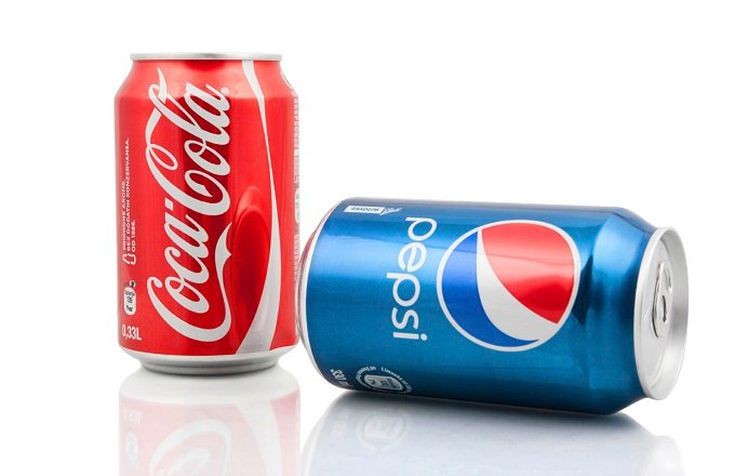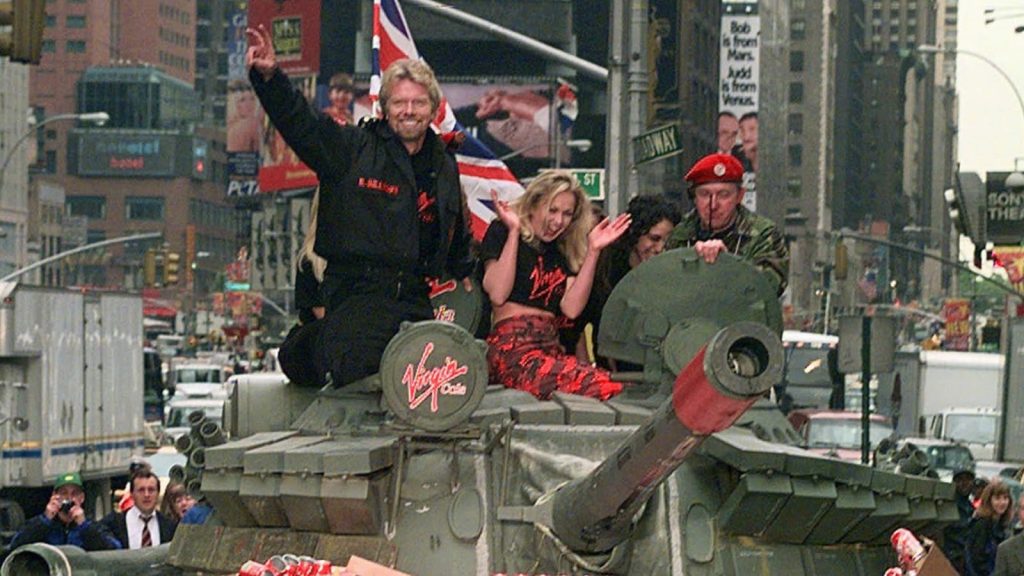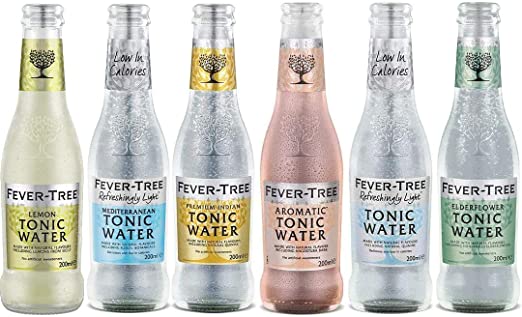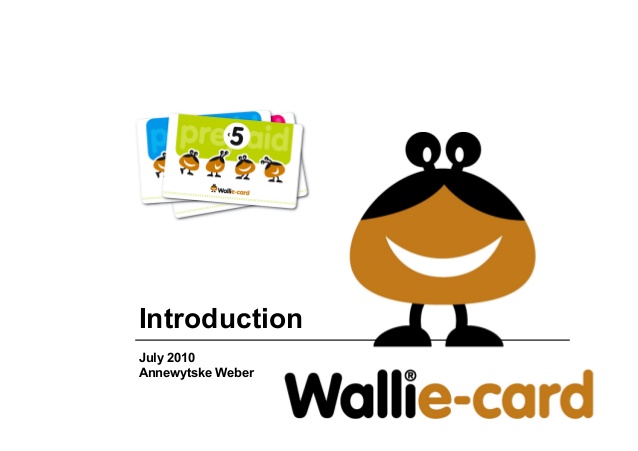“Challenger” brands… please take note
If you want to be a challenger brand, then you need to start behaving like one. A tale of 2 Founders

At a desk in West London one of the world’s great entrepreneurs was staring despondently at a set of figures.
The message was undeniable.
A business that had launched with great fanfare in the early 1990s and which had attracted huge attention and a marketing budget to match, was struggling.
When you set out to take on one of the biggest brands in the world, and your greatest achievement in a decade of trying, is to be number one in Bangladesh, you know that time is up.
With the air of a man finally admitting the inevitable, Richard Branson announced that it was over. Time to pull the plug.
Virgin Cola had been a failure.
At about the same time, in an office just a stone’s throwaway from Branson’s HQ, a new drinks business was being hatched.
Charles Rolls and Tim Warrilow had spotted a gap in the fizzy drinks market. The drinks mixers market, or to be exact, the premium drink mixers market.
A decade later, at the same office in West London, these two entrepreneurs would be staring triumphantly at a set of figures. Over £215 million in revenue and on the brink of an AIM listing. Within five years it would overtake the category leader in its market and post a market capitalisation of over £5 billion.
By any measure, Fever Tree’s first decade was a masterclass.
But how did that happen? A man with one of the strongest brands in the world couldn’t make a dent in the cola market, while two suits from London who had all the name recognition of an X factor winner, were absolutely crushing it.
Let’s press the pause button on that tale of two drinks and unpick the stories. First, I’m going to take us back to my childhood.
The Law of Leadership
My father was in the Army and when I was about five, we were stationed in the Middle East. The summer heat was off the scale, so work and school started early and finished at midday. We spent many of those free afternoons at the beach where our daily treat was to be allowed to sit on a stool at the beach bar with the other kids, while the barman served us an ice-cold Coke.
At some point on a bar stool in Aden, with five whole years on my back, Coke became my soft drink. From that point on, nothing else would do.
No-one told Richard Branson about my conversion, nor the conversion of hundreds of millions like me, and that was his first problem. He broke a whole bunch of marketing rules during his ill-fated cola coup, and this was first one. This is the Law of Leadership*. No-one told him that it’s not the best product that wins, nor the cheapest, it’s the one that get into the customers’ mind first.
People don’t break those bonds easily, if at all. Smokers stick with the same brand forever and most people use the same bank all their life. Coke and Pepsi had been winning people’s minds for over a hundred years.
Branson’s first big mistake was to think that this law didn’t apply to him. He was trying to swim against the tide of human psychology and a century of marketing.
Every mature market has a leader, and it usually has a number two. It also has a bunch of small niche players. That’s the pecking order.
Credit cards has Mastercard, Visa and the rest.
Planes has Boeing, Airbus, and the rest.
Browsers has Chrome, Safari, and the rest.
And the fizzy drinks market that Richard Branson was trying to barge into had Coke, Pepsi, and the rest.
Branson wanted to unseat Coke or Pepsi. He wanted to be a market leader and tried everything. There was even the Sherman Tank in Times Square. Not the Cockney Rhyming Slang kind.
Branson likes a publicity stunt, but even he draws a line somewhere. No, he drove an actual vintage Sherman Tank through a wall of Coke cans in Times Square at the US launch. He was figuratively and almost literally parking his tanks on Coke’s lawn.

But we’d already decided. We were Coke people, or we were Pepsi people, or in some cases we were 7-Up, Sprite, or Fanta people.
Our heart and minds were taken, and we weren’t about to become Virgin Cola people.
That particular delivery truck had left the depot long before Richard Branson appeared on the scene.
And it doesn’t matter if it’s Cola, Marketing, Fintech, Cloud services or Banking. Every market has a leader who is there because they won the battle for peoples’ minds and you’re not going to displace them. So, what’s my solid advice?
Don’t try!
The Law of Category
So, what do we do and what should Virgin have done? Well, we start by looking at the example of Fever Tree.
Rolls and Warrilow understood that they weren’t going to takeover the fizzy drinks market and that was never their intention. The pecking order was established, and the leadership spots were not up for grabs. Their job was to be a challenger.
They also understood what they were challenging. Coke and Pepsi weren’t their target. They were only interested in challenging in the tonic category where the leaders were brand names like Schweppes and Canada Dry.
This is the Law of Category* and it applies, when a market breaks into categories and niches. Many gin and tonic fans have long since decided what their tonic is, and there’s no shifting them. That category wasn’t up for grabs.
So, if you can’t win your category, what do you do? You start a new category.
Fever Tree started the Artisan Tonic Category, and then they did what any great challenger does. They behaved like a challenger. They looked at all the things Schweppes and Canada Dry do badly and modelled their business around doing the opposite.
Schweppes tonic is made from cheap man-made ingredients. Fever Tree took it up market with premium natural ingredients.
Schweppes branding is boring.
Fever Tree kicked it up a notch with tonics infused with alluring flavours like Elderflower, Angostura Bark and Lemon.

Now… Like a good challenger should, they became the anti-Schweppes.
Compare that to Virgin who tried to be just like Coke. Instead of creating a new category, Branson wanted it all. He wanted to be market leader. Virgin fought and died on the wrong hill. Far from winning market leadership, he got a bloody nose, lost a shed load of money, and retreated to Necker Island with his beard between his legs.
The results of these two market entrants couldn’t have been more different.
Branson spent tens, maybe hundreds of millions trying to crack the Cola market and barely topped £30 million in sales. Fever Tree played a smart and stealthy game, and with a fraction of Virgin’s budget are now tipping the scales at £250m of sales. Virgin Cola is dead, and Fever Tree has just passed Schweppes in sales.
The secret to being challenger is to know your place.
If you want to be a challenger brand, then you need to behave like one.
It’s all about positioning.
You are not going to be market leader, but you can lead your category on your terms. Invent your own category and be first into people’s minds. Then sit back and celebrate with a Gin and refreshingly light Mediterranean tonic infused with floral botanicals. Cheers.
* The Law of Leadership and The Law of Category are from “The 22 Immutable Laws of Marketing” by Al Ries and Jack Trout.
Author
Glenn Burgess
Glenn P Burgess Author, Speaker - UK's No1 Fintech & SaaS Marketing expert. With multiple multi million launches under his belt and a stables of Global No1's, he now is an International Speaker, Invests in Startups, Mentors & Coaches SaaS owners and teaches at Google Campus & Ilia State University


